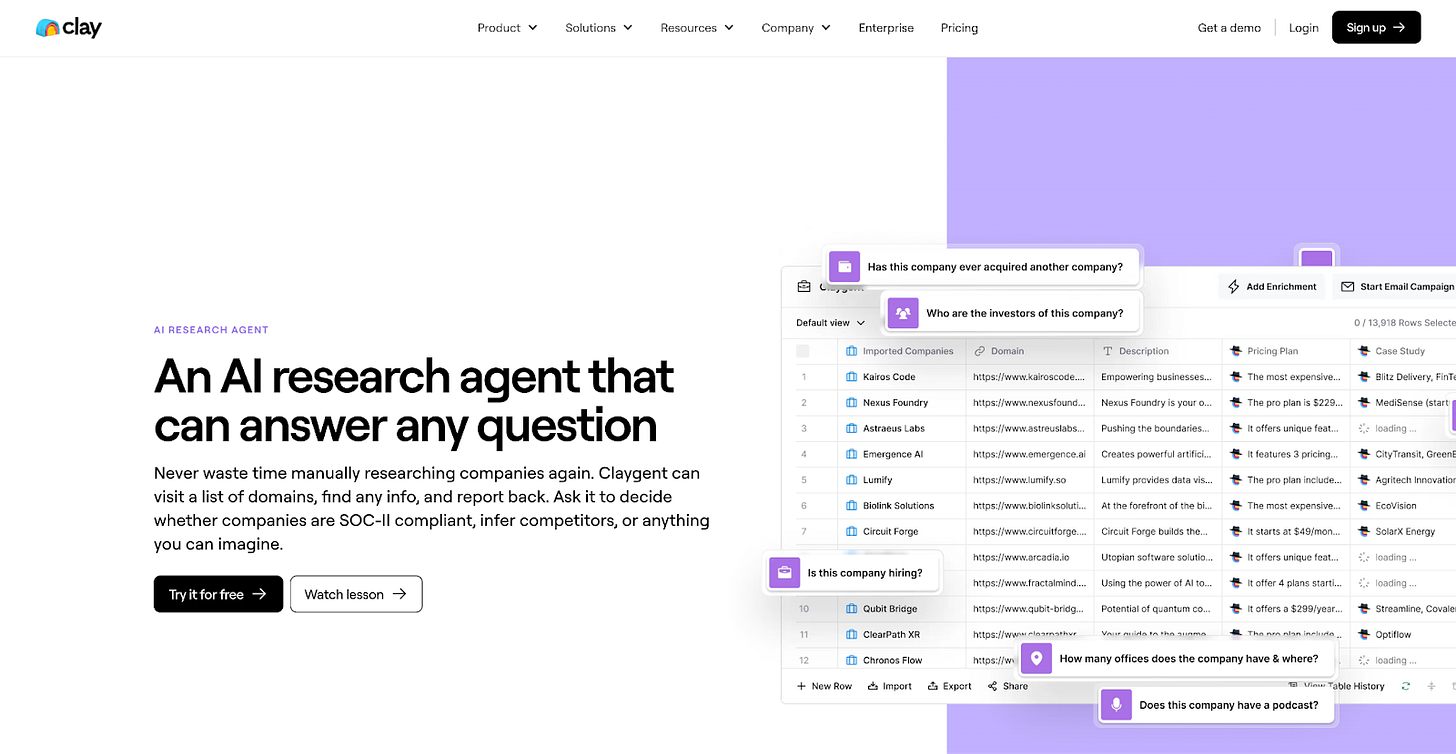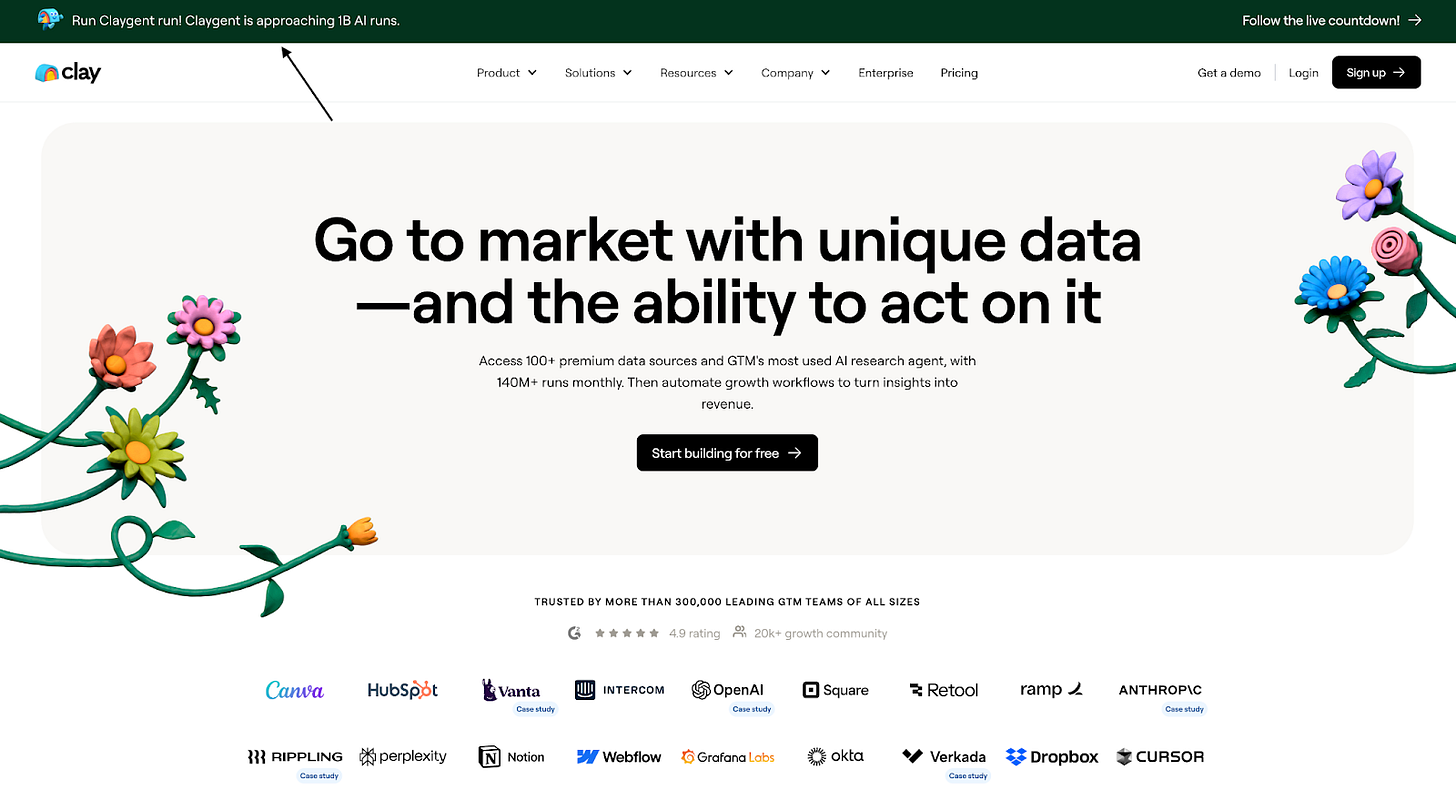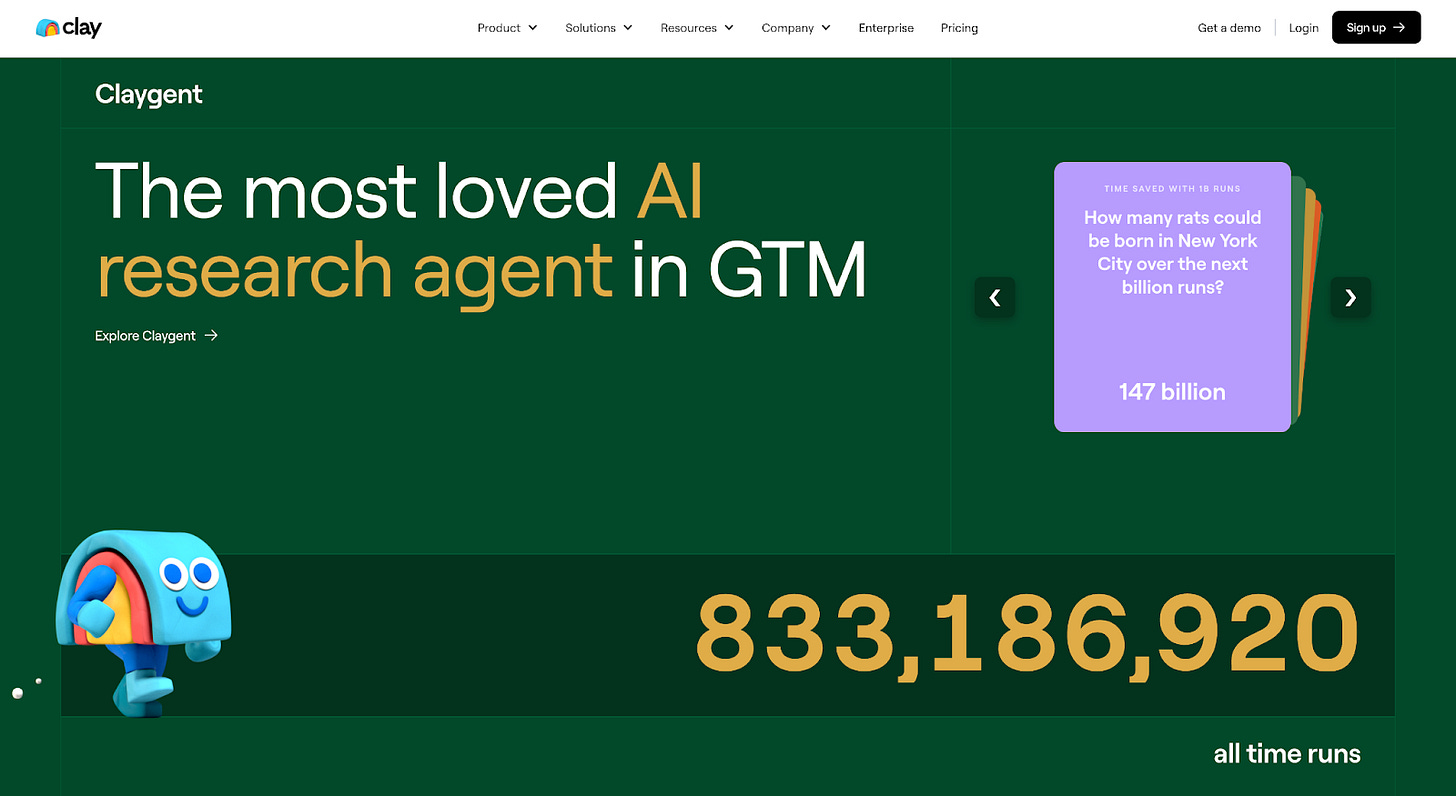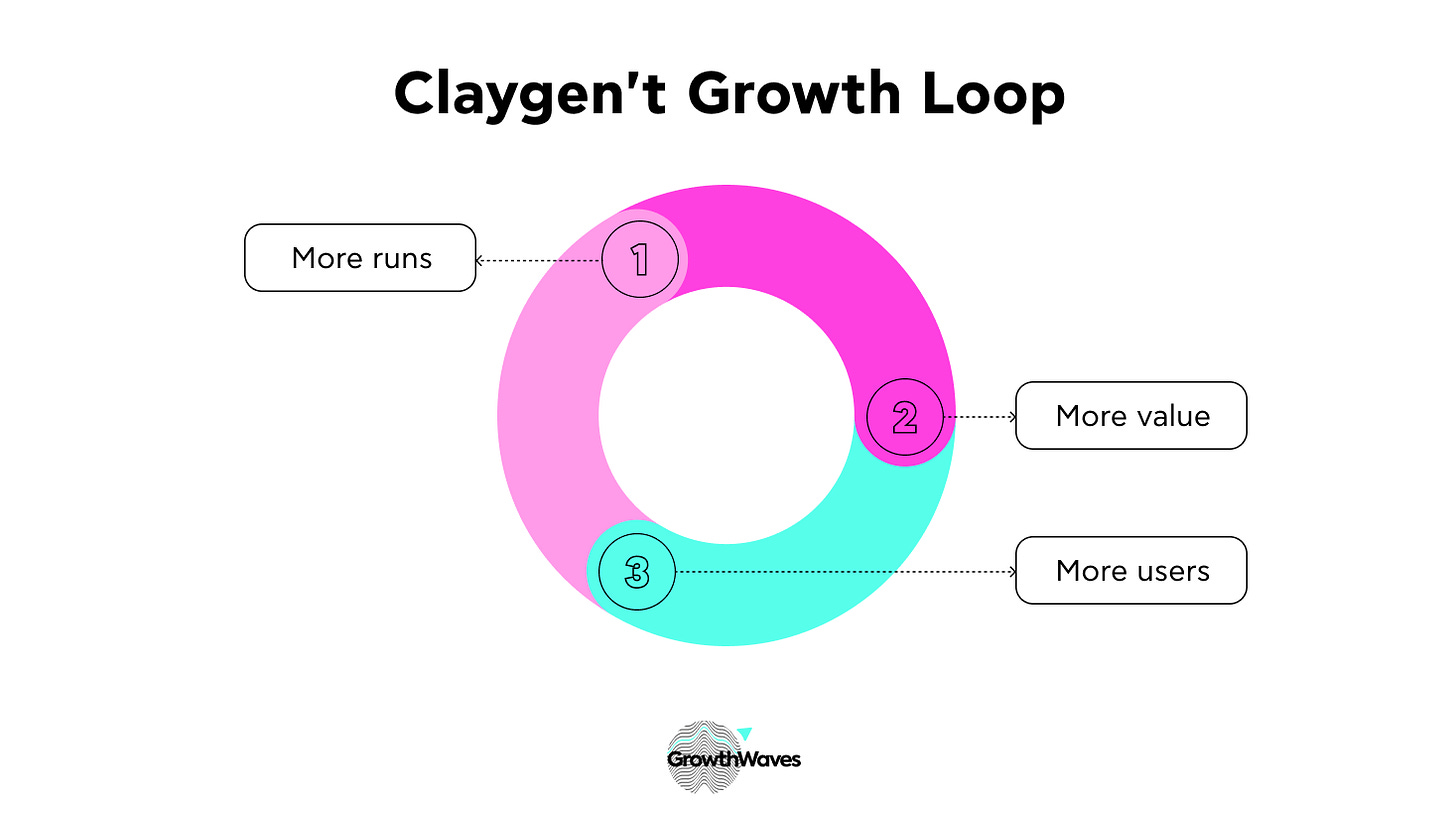Run Claygent run
How Clay turned a product milestone into a growth loop
👋 Hey, I’m George Chasiotis. Welcome to GrowthWaves, your weekly dose of B2B growth insights—featuring powerful case studies, emerging trends, and unconventional strategies you won’t find anywhere else.
The other day, I was on Clay’s website.
And saw something *really* interesting.
Something more important than most people realize.
Here it is.
Context
Clay is a tool that helps you with several use cases:
Lead enrichment,
Account scoring,
Signal-based outbound,
And more.
One of the features they have is Claygent, which is an AI research agent.

If you’re using Clay, then you know what this is about.
If not, take a look at the page above to familiarize yourself with the feature.
I was browsing Clay’s website a few days ago when I saw this:

The text reads:
Run Claygent run! Claygent is approaching 1B runs.
Author’s Note: You won’t see it on their website now; I guess because they launched it a bit earlier than they should.
I clicked on the CTA (Follow the live countdown →) and landed on this page:

You may be wondering why a countdown like this deserves a dedicated note.
Because more people should see how Clay creates a micro-moment around one of their core features.
Claygent is Clay’s research agent
The agent is nearing 1B all-time runs
Clay’s turning that milestone into a magnet for the product
The logic behind this play is simple:
More runs → more value
More value → more users
More users → more runs
That’s how you turn usage into momentum.
Think about it:
Every run is a chance to prove the product works. And pull someone else in.
Show traction publicly, and suddenly everyone wants in.
It’s simple, yet ingenious.
Now, to be clear, I haven’t reached out to Clay regarding that.
I guess I’ll get on a call with someone from their team once the countdown is complete to discuss this play (among other things).
Author’s Note: Claygent has ~850M runs as of writing this. It's still significant, but it needs some time until it reaches the 1B mark.
For now, let me explain why what they’re doing here is important.
Creating micro-moments around your core value metric
As explained earlier, more runs indicate that the product creates more value for its users.
(I’m assuming Clay counts only successful runs as part of its countdown.)
More value publicized and promoted serves as a magnet for attracting more users.
More users mean more runs.
And the growth loop continues.
The process shouldn’t start with the number of runs.
It should start with identifying your core value metric.
In other words, the metric that best describes the value people get from your product.
Often, you’ll identify several metrics, but one should matter more than the rest.
For an outcome-based feature like Claygent, identifying that metric is easy.
The outcome from using Claygent is a successful run, the metric most likely to indicate that the user got value from their interaction with the product.
Here are some additional examples:
Online Meeting Software: Number of Meetings or Number of Minutes
CRM: Number of Closed Won Deals
Creator Platform: Number of $ Paid to Creators
Accounting Software: Number of Invoices
Online Design Software: Number of Exported Designs
Lately, many companies have tied their pricing (e.g., successful outcome) to that metric.
But that’s a topic for another note (or series of notes).
So, identifying this metric is step one.
From there, assuming you have the technical infrastructure to track this metric, you can create micro-moments based on specific milestones.
I suggest you have a dedicated page on your website tracking this metric.
Most companies won’t do that for competitive or technical reasons, which is okay.
Having the page up and running (like Clay does with their countdown) and using it whenever you hit specific milestones is a great way to generate buzz about your product or other important features.
That shouldn’t be a once-per-week celebration kind of thing.
But you can find a cadence that makes sense, again, always tied back to the value users get from your product.
Plus, I find it very important to be open about your core value metric for transparency purposes.
You show your customers, prospective customers, and audience that you know what matters to them and that you’re aligned because that’s what matters to you, too.
And, you’re open enough to get out there in public.
Here’s the process, simplified:
Simple stuff.
Let’s wrap this up.
Final thoughts
Everything starts with identifying that one metric.
Some people call it your north star metric.
But the terminology doesn’t matter as much.
To me, it’s the metric that describes the value of your product.
Thus, the Core Value Metric.
Identify it, track it, and build micro-moments around it.
That’s what I want you to keep from today’s note.



